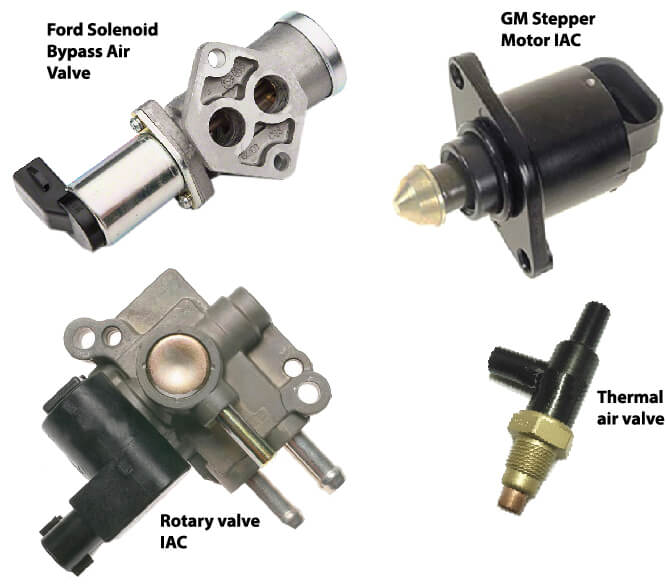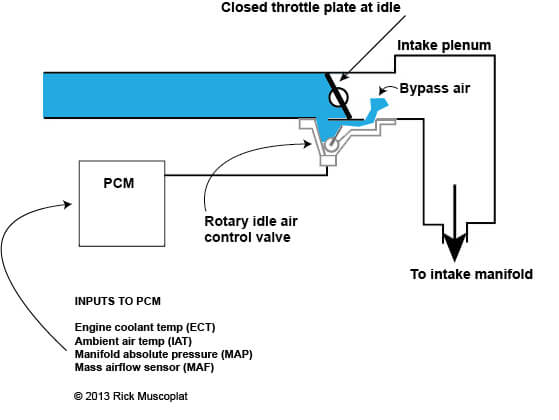Idle air control valve
What is an Idle air control valve?
An idle air control valve (IAC) is usually mounted to the throttle body in a fuel injected engine. The valve opens and closes based on commands from the vehicle’s powertrain control module (PCM) to provide a specified amount of air needed to keep the engine running during idle.
Types of idle air control valves
IAC valves are operated by a stepper motor, servo motor or electric solenoid. The motors move a tapered pintle into or out of a matching tapered seat, thus varying the amount of air passing through the valve.

Why IAC valves move?
In a carbureted vehicle, the throttle plate is kept open slightly at idle by a stop screw. This allows just enough air to enter the engine to draw fuel from the carburetor bowl and keep the engine running at idle. In fact, carbureted engines have several “steps” on the set screw mechanism to vary the throttle plate opening and idle speeds when the engine is cold and subsequently lowers idle speeds as the engine warms up. In addition, many carburetors incorporate a dashpot that gently closes the throttle plate during a quick acceleration so as not to starve the engine for fuel when the driver takes his/her foot off the gas.
But fuel isn’t delivered through the throttle body in a port injected engine. Rather than rely on a stepped screw mechanism, fuel injected engines rely on an electric motor to control the amount of air entering the engine when the driver’s foot is off the gas.
For example, the IAC will provide more bypass air on a cold start to allow enough air to enter the engine to match the richer fuel mixture needed to start and run a cold engine. As the engine warms and less fuel is required, the PCM commands the IAC to close until the it introduces just enough air to keep the engine running at idle.

©, 2018 Rick Muscoplat
